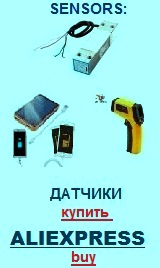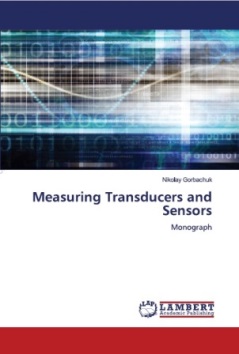
русский / english

Fig.10. The fuel pressure regulator
The fuel pressure regulator (RDT) VAZ
RDT is a valve that regulates the pressure in the fuel rail. According to the principle of is not a sensor, and a controller. As it is not associated with the ECU, its fault is not displayed on the instrument panel. If there is a fault RDT can be problems with starting the engine increases the co content in the exhaust gas, increases gas mileage, jerking, loss of power.
RDT on vases installed on the fuel rail. RDT connects one pipe to the tank, and the other with the intake manifold.
Test RTD you can measure the fuel pressure in the rail. The pressure should be at idle by removing the vacuum pipe with RDT 2.84-3.25 bar, and Assembly 2.2-2.4 bar.
The fuel pressure regulator also can be located in the tank along with the fuel pump and to maintain a pressure of 3.8 bar.
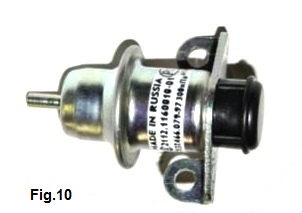
Fig.9. The IAC
The idle air control (IAC) for VAZ
The sensor is a stepper motor, which according to the command of the ECU changes the cross section of the air channel bypassing the throttle. The idle air control (IAC) hosted on the throttle (and the TPS). The sensor ensures the stability of idling.
In case of sensor failure unstable engine revs at idle, stalling at the start, with a little pressure on the gas pedal works normally.
Sensor quite often fails. Often affected by pollution.
If there is a malfunction of the IAC, then you need to remove the sensor, rinse the sensor rod and the air channel from the mud. Flushing often helps.
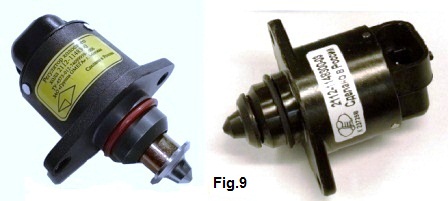
Fig.8. Lambda probe
Lambda probe or sensor of concentration of oxygen
Controls the amount of oxygen in the exhaust gases. Actively participates in the regulation of the mixture formation in the engine. Euro 2 has 1 lambda, Euro-3 two (the second only controls the mixing). If you run more than 80 thousand kilometers may be damaged or clogged. Starts to give incorrect readings. Appears the fuel consumption, the deterioration of the dynamics of the engine.
Fig.7. Sensor mass air flow
Sensor mass air flow (MAF) VAZ
The sensor is a thermal anemometer. The sensor located just after the air filter and controls the amount of air taking from outside. Designed to control the flow of air. Sometimes goes down. For minor faults the control unit ECU, as a rule, does not show the error, and indicates when the sensor is completely failed.
Signs of a faulty MAF are:
floating idle, increased fuel consumption, problems with the engine starting, deterioration of the traction engine roughness.
The sensor can be checked in the following way:
1. Check the air flow at idle and at 3000 rpm. Consumption should be 8-10 and 28-32 kg/HR.
2. To put a working sensor and ride.
3. Measure the voltage on the sensor. With the engine off the voltage should be 0,996 V.
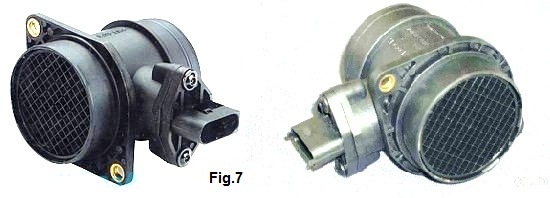
Fig.6. Speed sensor
Speed sensor (LH) VAZ
The sensor is mounted on gear box (transmission). DS generates pulses depending on the speed of the car. On Vases only used six pulse speed sensors. The sensor also affects the mixture formation, its health is quite important.
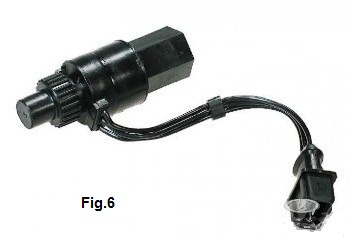
Fig.5. Temperature sensor coolant
Sensor coolant temperature (CTS) VAZ
The sensor monitors the coolant temperature (coolant), transmits information to the control unit (ECU). The ECU includes-switches off the radiator fan affect the operation of the valve of the canister, adjust the revs on a cold engine.
The sensor is installed between the thermostat and cylinder head. Is a conventional thermistor.
Typical values of electric resistance of the coolant sensor at 100 degrees is 177 Ohms, and 25 grams. — 2796 Ohms, 0 gr. — 9420 Om — 20 gr. — 28680 Ohms.
The sensor rarely fails. Common fault open line of communication between the sensor and the ECU. In case of sensor failure, the ECU is running in emergency mode and takes the engine temperature is equal to 0C, making it difficult to start engine in cold weather. If I start the engine, then after a few minutes the ECU thinks that the engine is warmed up to 80C.
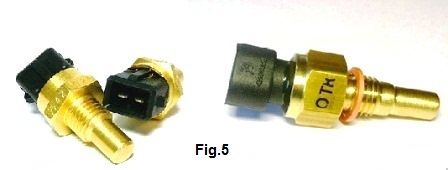
Fig.4. The knock sensor
The knock sensor (KS) VAZ
DD installs on the engine block between the third and the second cylinder. The principle of operation is resonant and broadband. These sensors are not interchangeable.
A detonation sensor monitors the engine and, depending on the magnitude of detonation helps the control unit (ECU) to adjust the ignition timing (advance angle).
If the sensor is defective the engine will run erratically, increases the consumption of gasoline.

Fig.3. The camshaft position sensor
The camshaft position sensor (DPRV). Sensor phases
DPLL determines the angular position of the camshaft. Contributed to work in the right time the right injector of the specific cylinder (phased injection).
Sensor malfunction leads to excessive consumption of gasoline, because the fuel flow is in the pairwise-parallel mode.
The sensor is located in the end part of the cylinder head near the air filter on the 8 valve engines and at the cylinder head in the area of the 1st cylinder 16-valve engines.
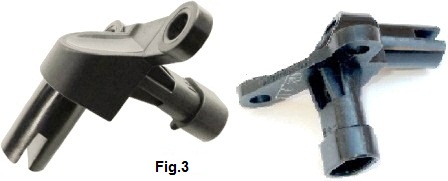
Fig.2. Sensor throttle position
Sensor throttle position (TPS) VAZ
The sensor is located on the throttle body. Almost is a variable resistance. According to the testimony of the sensor electronic engine control unit (ECU) calculates the duration of fuel injection and ignition timing.
The sensor is associated with the IAC, determines the degree of opening of the throttle. In case of failure of the sensor operation of the engine at low rpm becomes erratic or even the engine stalls. Lamp may light the “Check Engine”.
When sensor circuit open engine begins to operate in emergency mode with an engine idle speed of approximately 1500.
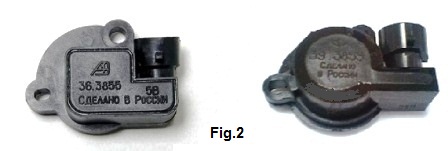
Fig.1. The crankshaft position sensor
The crankshaft position sensor CKP sensor (DPKV) VAZ
The image sensor shown in Fig.1. Sensor (CKP sensor) monitors the crankshaft rotation, generates signals to an electronic control unit (ECU), which are processed and the ECU sends a pulse to the injectors. For this purpose a toothed disc, which is mounted on the crankshaft. The sensor is on the oil pump cover. Without CKP sensor to start the engine is practically impossible. Sensor rarely groom down, but still useful to carry a spare with you.

The sensors injection car VAZ
Modern automobiles equipped with fuel injection systems that increases engine power, efficiency. The use of such systems necessitates the use of various sensors to automate driving.
Here is a brief overview of the concepts and purpose of the basic sensors in modern fuel injected automobiles.
• Information about various converters and sensors of physical quantities, parameters of various physical processes is presented.
• Electrophysical properties and effects in various electrical materials.
• Theory, experimental results, practical application
Transducers, gauges, sensors - Information portal © 2011 - 2025 Use of material is possible by placing an active link
See also:

